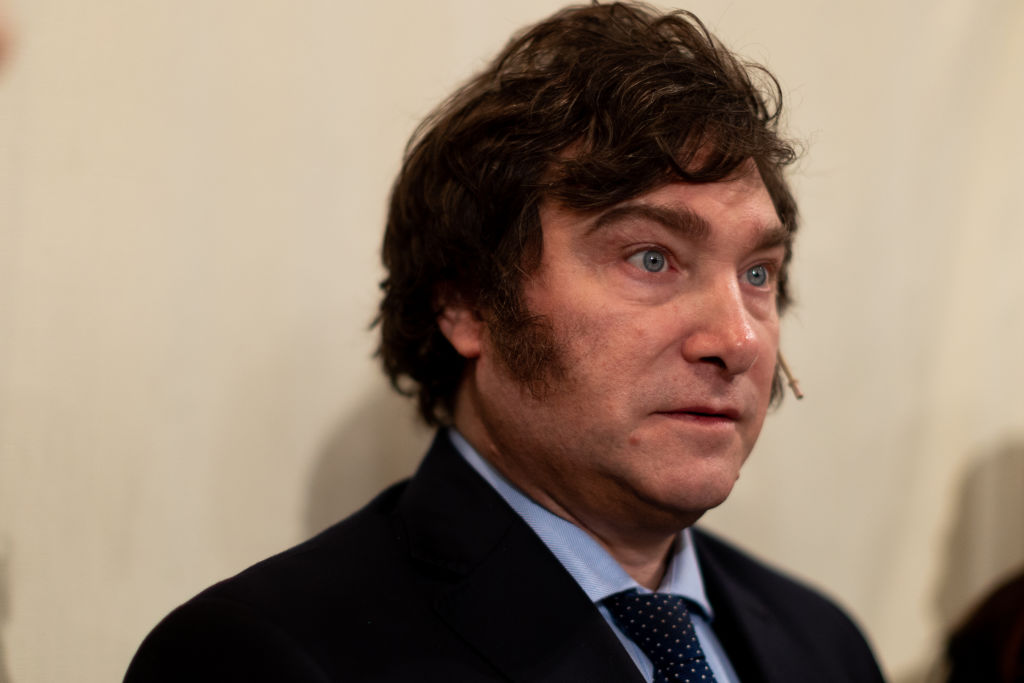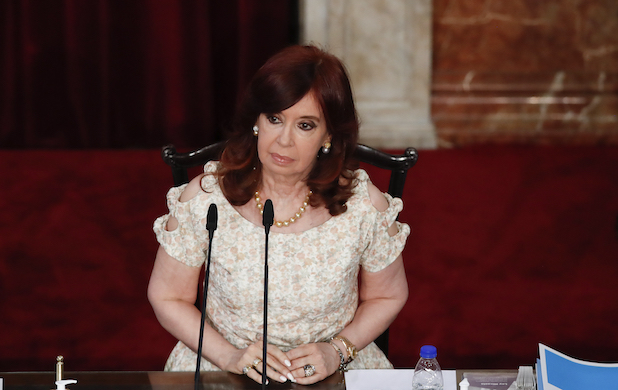After Intervention From Milei, Will the Truth Triumph in Probe of Death of Prosecutor Investigating the AMIA Bombing?
‘Murder’ Milei calls it, marking the him as the highest ranking official to concur that the death of the prosecutor, Alberto Nisman, was not a suicide.

Argentina is currently marking ten years since the death of Alberto Nisman, the federal prosecutor who was investigating the July 1994 terrorist bombing of the Argentine-Israelite Mutual Association Jewish community center at downtown Buenos Aires. On January 18, 2015, Nisman’s body was discovered in the bathroom of his apartment.
The previous Argentine government’s insistence that he committed suicide has been bitterly disputed by those who say that he was murdered. This matters because the truth about Nisman’s death could shine much needed light on Iran’s promotion of terrorism outside its borders.
On Saturday, in a statement timed to coincide with the anniversary of Nisman’s death, Argentina’s president, Javier Milei, a vocal supporter of Israel and Jewish causes, stepped into the controversy. “The Office of the President passionately remembers the 10th anniversary of the murder of Federal Prosecutor for the UFI-AMIA [investigative unit], Alberto Nisman, at the hands of the darkest forces of power,” Mr. Milei declared.
The statement is highly significant for three reasons. Firstly, Mr. Milei is the highest-ranking Argentine official so far to concur that Nisman was murdered. Secondly, Argentina’s president for much of the period of Nisman’s investigation, Cristina Fernandez de Kirchner, who became a critical element of his probe, continues to assert that Nisman took his own life.
Ms. Kirchner responded to Mr. Milei’s statement by sharing a lengthy post from a political ally that labeled the death a “suicide” and attacked the “bombarding” of the press “with reports about his so-called ‘murder.’”
Thirdly, Ms. Kirchner could yet face trial over both her possible involvement with Nisman’s killing and her decision to approve a 2013 Memorandum of Understanding with Iran which led the country’s highest courts to agree that she should face trial for “concealment and abuse of authority.”

Nisman’s story, and that of the AMIA bombing, begins in Iran, the source of the plot as well as its planner and executioner. On that winter morning in 1994, a suicide bomber linked to Iran’s proxy Hezbollah drove a truck packed with explosives into the AMIA building, killing 85 people and wounding more than 300. Until the massacre by Hamas in Israel on October 7, 2023, the AMIA bombing stood as the worst single atrocity targeting Jews since the Nazi Holocaust.
The first investigation into the bombing focused on accusations against local operatives and eventually collapsed amid allegations of judicial corruption and procedural incompetence. When Nisman took over the investigation in 2004, at the request of President Nestor Kirchner, Cristina Kirchner’s late husband, he quickly shifted its focus to the Islamic Republic.
In early 2007, President Nestor Kirchner chalked up his first success when Interpol issued “red notices” — alerts for internationally-wanted fugitives — for six Iranian officials, including Ahmad Vahidi, who today serves as the Iranian regime’s Interior Minister. As his investigation progressed, Nisman also uncovered valuable data about the extent of Iranian operations in Argentina and across Latin America.
Following Cristina Kirchner’s election as President in 2011, however, her administration reversed its Iran policy, in part, some say, because of the influence that the late Venezuelan dictator and ally of Tehran, Hugo Chavez, wielded over her. The memorandum with Iran, which involved Argentina exchanging grain, nuclear technology (allegedly), and a commitment not to pursue the accused AMIA plotters for Iranian oil.

The memorandum put Nisman — who, in a determination that was later verified in court, denounced it as unconstitutional — at loggerheads with the government. According to the latest judicial investigation into the circumstances of Nisman’s death, issued earlier this month by prosecutor Eduardo Taiano, Kirchner ordered Argentina’s SIDE intelligence agency to cease cooperation with the AMIA investigation. The Taiano report also noted that Nisman was the subject of an Iranian fatwa calling for his death and that he began receiving chillingly worded threats.
On January 14, 2015, Nisman filed an official complaint charging Kirchner and several of her closest associates with perpetrating a cover-up and attempting to provide immunity to those accused of the AMIA bombing. He had planned to detail the charges to the Argentine Congress on January 19.
However, one day prior, Nisman was found dead. The initial investigation, as Mr. Taiano documented, was suspiciously bungled, with more than 80 officials from various agencies tramping through his apartment, jettisoning basic protocols for evidence gathering. The prosecutor in charge of the investigation into Nisman’s death, Viviana Fein, who eagerly depicted it as a suicide, was observed stepping in pools of the prosecutor’s blood.
Hours before Nisman’s body was discovered, a fire ripped through the presidential offices where key files relating to the AMIA investigation were kept. As the days following his death turned into weeks and months, law enforcement and intelligence agencies answerable to the executive branch placed various delays and obstacles in the way of investigators, while key questions — particularly about the role of a computer consultant, Diego Lagomarsino, who owned the gun used to kill Nisman — remain unanswered.
Mr. Taiano’s report concluded that Nisman “was the victim of a homicide, and his death was motivated by his work in the UFI-AMIA [unit] and, specifically, by his actions related to the Memorandum of Understanding with the Republic of Iran.” Mr. Milei, meanwhile, is now saying that he is “confident that the judiciary will continue its investigations so that Prosecutor Nisman’s murder does not go unpunished.”
Mr. Milei has also urged the continuation of “the lines of investigation into Nisman’s complaint” against Ms. Kirchner and her colleagues, thereby suggesting that they may well be the “darkest forces of power” that colluded in his death. Whether he will deliver on these promises remains an open question. Mr. Milei needs the votes of the deputies and senators aligned with Ms. Kirchner, and he will also be wary of any clash with Argentina’s security services.
A few days before he died, Nisman wrote privately to contacts saying, “I know it’s not going to be easy. Quite the opposite. But sooner rather than later the truth triumphs…” With Milei’s statement, Argentines are closer than ever to the truth. But they have not arrived there yet.
